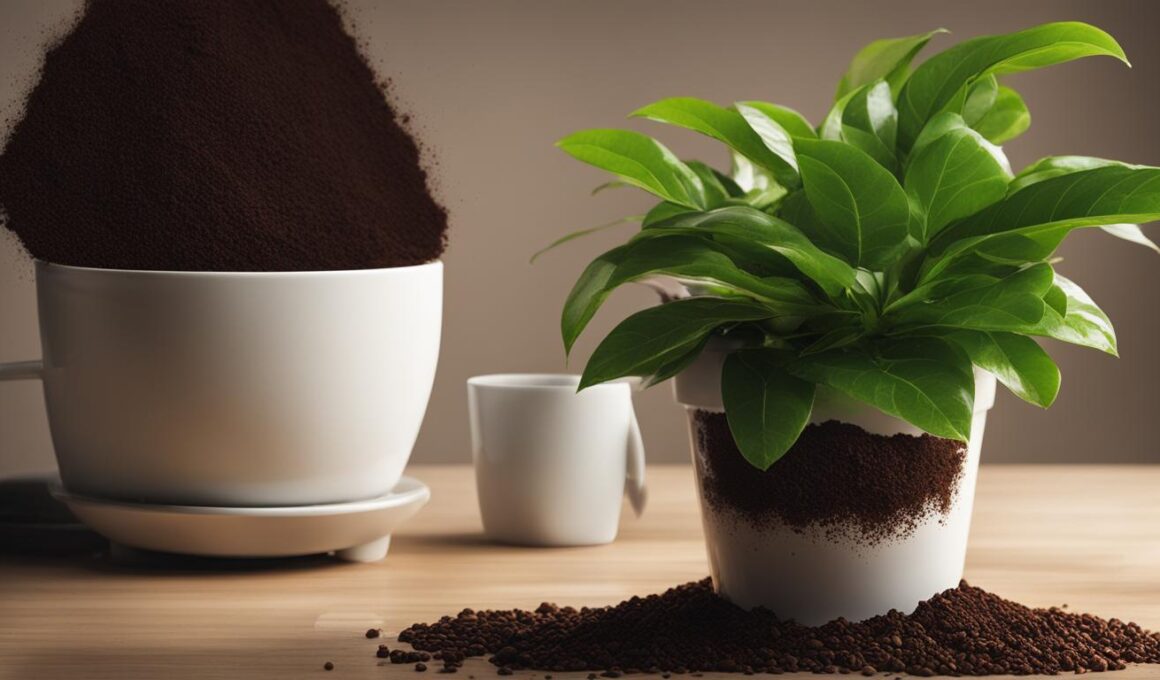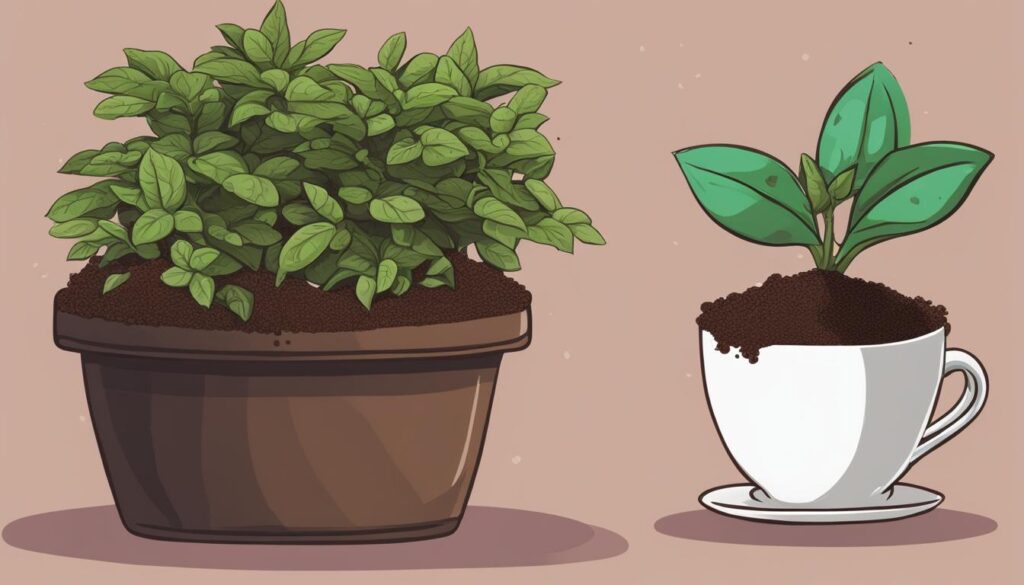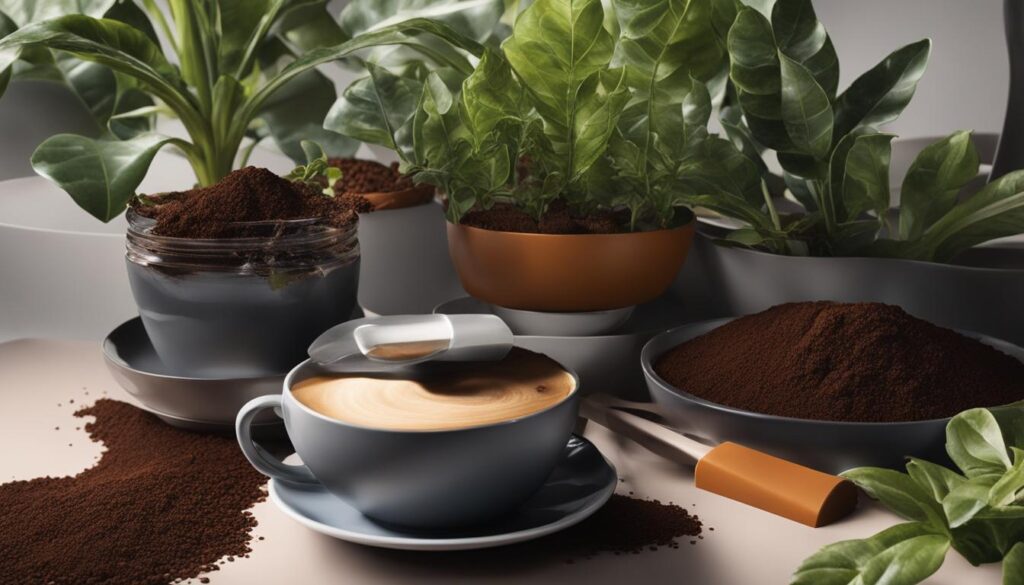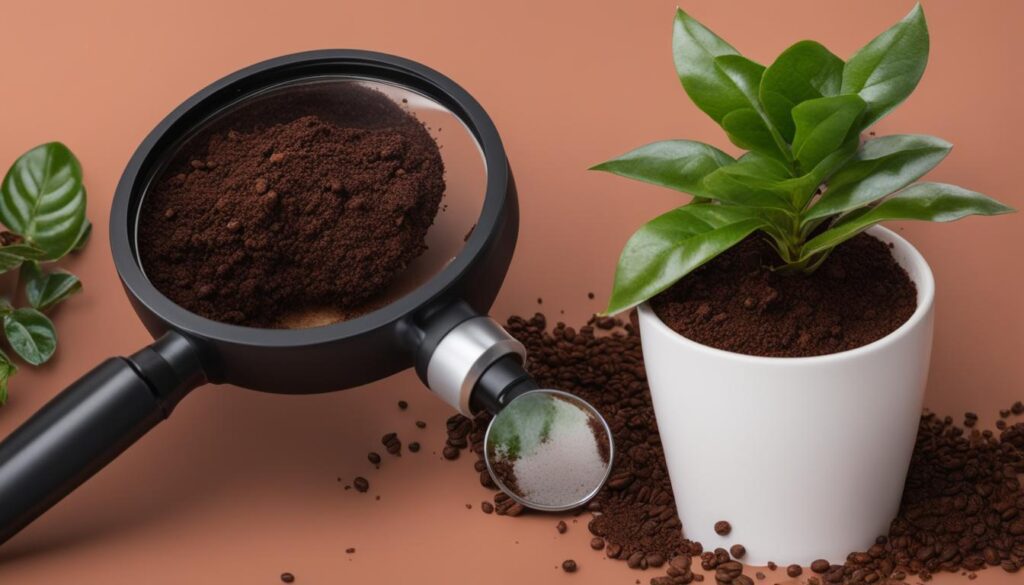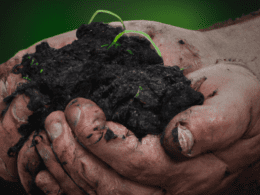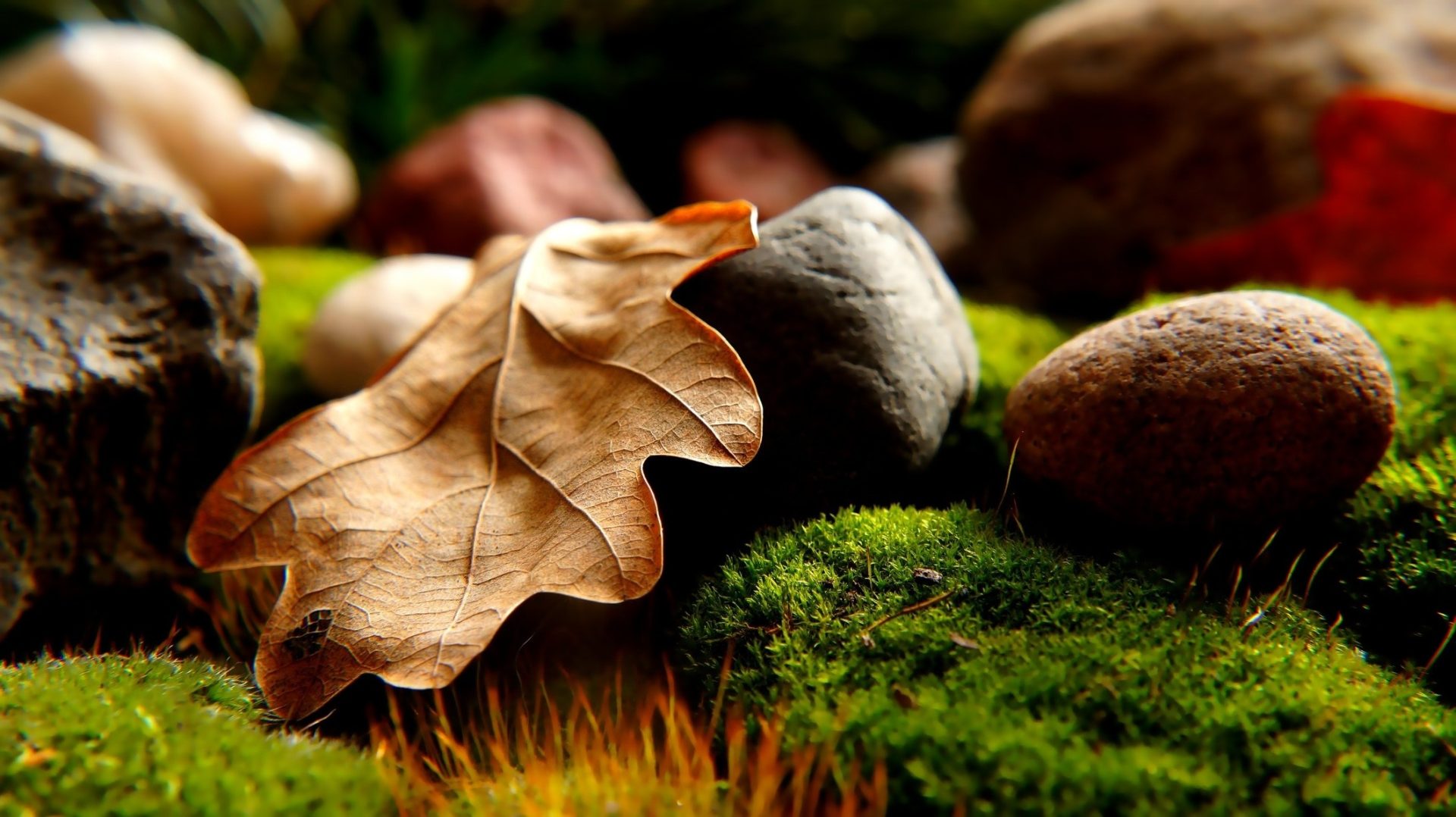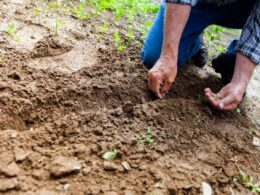Did you know that your morning coffee ritual could also benefit your indoor plants? Many gardeners and plant enthusiasts have found success in repurposing coffee grounds for plants to improve their growth and overall health. Coffee grounds as fertilizer offer numerous benefits, but it’s crucial to understand the differences between spent and fresh grounds when using coffee grounds in gardening. In this article, we’ll explore the science behind the effects of coffee grounds in plant soil and how to use them effectively to cultivate thriving indoor plants.
Key Takeaways
- Spent coffee grounds are an eco-friendly, nutrient-rich source of organic matter.
- Composting coffee grounds can unlock their benefits for plant health and growth.
- Applying coffee grounds directly to the soil may compact the soil and promote mold growth.
- Coffee grounds in compost can be applied to potted plants as a top dressing or mixed into soil.
- Contrary to popular belief, spent coffee grounds do not significantly alter soil acidity.
The Science Behind Coffee Grounds as Plant Fertilizer
Spent coffee grounds offer a sustainable option as an organic fertilizer for promoting overall plant growth. With a high nutrient content, coffee grounds are rich in essential elements vital for optimal plant growth and beneficial microbes that enhance soil structure. Instead of throwing away spent coffee grounds, you can transform this waste into valuable plant food by composting and decomposing it into bioavailable nutrient compounds.
Understanding the Nutrient Content of Spent Coffee Grounds
Spent coffee grounds provide an organic fertilizer rich in nitrogen, potassium, and trace amounts of phosphorous. Importantly, they also contain valuable micronutrients such as calcium, iron, magnesium, and zinc that plants require for optimal growth. However, these nutrients are not immediately available to plants and must undergo biological decomposition to be absorbed.
The table below highlights the main nutrient content of spent coffee grounds:
| Nutrient | Percentage |
|---|---|
| Nitrogen | 10% |
| Potassium | Variable |
| Phosphorous | Trace amounts |
Moreover, coffee grounds are an excellent source of organic matter that improves soil structure, promotes proper aeration, and fosters healthy water flow.
Composting Coffee Grounds for Plant Health
To unlock the full benefits of spent coffee grounds for plant health, it is recommended to compost them. Composting coffee grounds provides several composting benefits, including soil amendment, soil structure enhancement, increased aeration and water flow, and organic matter contribution. Furthermore, composted coffee grounds have been shown to suppress certain diseases in vegetable crops, although there is limited research on the effects on houseplants.
Integrating spent coffee grounds into your compost pile can contribute 10-20% of the total compost blend. This practice encourages waste transformation and converts coffee grounds into nutrient compounds accessible to plants. Thus, composting coffee grounds can lead to improved plant growth and health.
Decomposing Coffee Grounds: Transforming Waste into Plant Food
The decomposition process plays a crucial role in converting the nutrients present in coffee grounds into bioavailable compounds for plants. This process is carried out by soil microbes that release enzymes to break down the organic matter in spent grounds. Without decomposition, the raw nutrients in coffee grounds are inaccessible to plants.
Decomposed coffee grounds are highly beneficial to plants because they enrich the soil with organic matter, which promotes overall plant health. The addition of decomposed grounds to potting soil enhances nutrient availability, increasing the likelihood of plant growth.
Pros and Cons of Coffee Grounds for Houseplants
Using coffee grounds for houseplants can provide a range of benefits and potential drawbacks. Properly incorporating coffee grounds into your plant care routine can offer a sustainable and nutrient-rich supplement to your plants. However, applying coffee grounds incorrectly can cause adverse effects on plant growth. To harness the full potential of coffee grounds for your houseplants, it’s essential to understand the pros and cons of this organic material.
- Boost nutrient provision for plant growth
- Enhance soil structure
- Provide an eco-friendly fertilization option
- Support sustainable gardening practices
Disadvantages of coffee grounds for houseplants:
- Inhibit plant growth due to caffeine content if applied excessively
- Promote mold development if not properly decomposed
- Compact soil, impairing moisture and air circulation
- Potentially cause root damage due to improper application
Understanding the advantages and disadvantages of using coffee grounds is crucial for optimizing plant care and growth effects. The table below outlines the primary pros and cons of utilizing coffee grounds for your houseplants.
| Pros of Coffee Grounds | Cons of Coffee Grounds |
|---|---|
| Nutrient-rich source of organic material | Improper application results in growth inhibition due to caffeine content |
| Improves soil structure | Mold development risk if not decomposed adequately |
| Eco-friendly and sustainable fertilization | Soil compaction and root damage from incorrect application |
| Supports sustainable gardening practices | Requires proper application and management to avoid potential negative effects |
By understanding and taking into account the pros and cons of coffee grounds for houseplants, you can make informed decisions on how to incorporate this organic material into your plant care routine. Successfully utilizing coffee grounds can boost the health and growth effects of your potted plants while minimizing potential drawbacks.
Effective Methods for Using Coffee Grounds in Potted Plants
Integrating spent coffee grounds into compost is the most effective method for harnessing their potential benefits in potted plants. By following best practices for combining coffee grounds with compost materials, you can create a nutrient-rich soil mix that promotes healthy plant growth.
Integrating Spent Coffee Grounds Into Compost
When incorporating spent coffee grounds into your compost pile, it’s essential to maintain an appropriate balance of ingredients. Coffee grounds should make up about 10-20% of the total compost mix. To maximize the potential benefits, it’s essential to incorporate other organic materials, such as fruit and vegetable scraps, leaves, and grass clippings. Keep in mind that over-saturation with coffee grounds may lead to compaction and limit air and water movement in the soil.
Once your compost has completed the decomposition process, it’s time to apply it to your potted plants. There are two primary methods for utilizing this nutrient-rich compost:
- Blending with potting mixes: Combine the finished compost with your preferred potting mix at a ratio of up to 30% compost and 70% potting mix. This blend offers an ideal balance of nutrients and improved soil structure, helping your plants flourish.
- Top dressing for potted plants: Apply a thin layer of compost to the surface of the potting soil. This technique provides slow-release nutrients for your plants while avoiding over-saturation and potential soil compaction.
Whichever method you choose, it’s vital to use the finished compost sparingly when applying it to your potted plants. Using too much compost can lead to soil compaction and other issues detrimental to your plant’s health.
In summary, integrating spent coffee grounds into compost is a highly effective way to utilize this resource in your potted plants’ soil enrichment. By following these guidelines and properly applying finished compost, you can experience the benefits of improved soil structure, better nutrient availability, and enhanced plant growth.
Addressing Common Misconceptions: Acidity and Caffeine Content
One of the most prominent misconceptions about coffee grounds is related to their pH levels. Many people believe that spent coffee grounds will inherently lower the pH value of soil, as is the case for brewed coffee. However, this notion is not entirely accurate. Although brewed coffee is indeed acidic, the brewing process leaches most of the acids out from the grounds, leaving spent coffee grounds with a near-neutral pH value.
To highlight this fact, let us examine some common acidity misconceptions and separate the myths from the facts.
Separating Myths from Facts: Coffee Grounds’ pH Levels
-
Myth: Spent coffee grounds make soil acidic.
Fact: The brewing process leaches out most of the acids, leading to a near-neutral pH value for spent coffee grounds.
-
Myth: Adding coffee grounds to potted plants will adjust the soil’s acidity.
Fact: Studies have shown that composted coffee grounds do not consistently lower soil pH levels.
The takeaway here is that it is crucial not to rely on spent coffee grounds to adjust soil acidity, particularly when it comes to houseplants and potting mixes. For instance, acid-loving plants, such as azaleas and blueberries, might require additional soil amendments to maintain their preferred pH levels, as spent coffee grounds alone may not suffice. Instead, focus on utilizing coffee grounds for their potential benefits to plant growth and soil health, remembering that the pH level adjustments may not be as dramatic as once believed.
Brewing the Perfect Fertilizer: Coffee Grounds Tea for Plants
An alternative to composting spent coffee grounds is to create a coffee grounds tea to be used as a liquid fertilizer for your houseplants. This method not only offers nutrient provision but also enables better moisture control when applied to plants. Follow the steps outlined below to brew the perfect nutrient-packed coffee grounds tea for your plants:
- After collecting spent coffee grounds, let them dry thoroughly to inhibit mold growth.
- Fill a jar or container with 1-part coffee grounds and 4-parts water.
- Allow the mixture to steep for 24 hours, stirring occasionally.
- Strain the mixture through a fine-mesh sieve or coffee filter, retaining the liquid and discarding the grounds.
- Dilute the concentrated tea with an equal amount of water to create your final liquid fertilizer.
By following these steps, you will create a gentle yet effective fertilizer solution that will improve houseplant nutrition without causing harm. The brewing process extracts nutrients such as nitrogen, potassium, and phosphorus from the coffee grounds into the water, creating an easily absorbed solution for plants.
Once prepared, you can apply this coffee grounds tea to the soil, ensuring an even distribution of moisture throughout the pot. However, it is essential to use this liquid fertilizer sparingly and as part of a comprehensive plant care routine. Over-fertilization with coffee grounds tea can lead to harmful side effects if not properly balanced with other essential elements of houseplant care.
With the proper brewing techniques and application, coffee grounds tea can be a sustainable and effective way to provide your potted plants with the nutrients they need to flourish. Be sure to monitor your plants’ growth and adjust your fertilization regimen accordingly to ensure optimal health and development.
Maximizing Plant Growth: Best Practices for Coffee Compost Use
Using coffee compost can significantly improve the health and growth of your potted plants. However, it is crucial to apply this resource carefully to avoid over-fertilization and potential damage. Here are some best practices for using coffee compost in your potted plant care routine:
- Apply a thin layer: To provide optimal benefits to your plants, spread a thin layer of composted coffee grounds on the surface of the potting soil. This method allows for a slow release of nutrients without causing soil compaction or mold growth.
- Mix into the soil during repotting: When repotting your plants, mix composted coffee grounds into the soil, ensuring even distribution of nutrients. This approach enables the plants to access the benefits of coffee compost more directly.
- Limit compost to 30% of the potting mix: For best results, coffee compost should make up no more than 30% of your potting mix. This proportion promotes improved soil structure and enhances aeration without the risk of over-fertilization or damage.
Adopting these best practices when using coffee compost in your indoor garden can lead to maximized plant growth, healthier root systems, and a more vibrant living space.
Understanding the Impact on Soil Structure and Water Flow
Organic matter, such as that found in composted coffee grounds, plays a significant role in maintaining the health of potting soil. By improving soil structure, organic matter promotes better aeration and water distribution, leading to healthier roots and plants. The introduction of compost into the soil also increases its nutrient-holding capacity, which is particularly beneficial for potted plants.
The Role of Organic Matter in Potting Soil Health
Organic matter contributes to potting soil health in several ways. These include:
- Improved soil structure: Organic matter helps create a loose, well-structured soil that retains moisture and nutrients while allowing for sufficient air and water movement.
- Increased nutrient availability: Decomposed organic matter releases nutrients, making them readily available to plants.
- Enhanced water infiltration and retention: Organic matter improves the soil’s ability to absorb and hold water, ensuring that plants have a consistent supply.
- Support for beneficial soil organisms: Organic matter serves as a food source for soil microbes, which break down the material and release nutrients for plant uptake.
Composted coffee grounds provide a rich source of organic matter and can be easily incorporated into potting soil to enhance its overall health. However, it is important not to overuse coffee grounds to avoid soil compaction and potential plant health issues.
Table 1: Comparing the Benefits of Organic Matter Sources for Potting Soil Health
| Organic Matter Source | Benefits | Potential Drawbacks |
|---|---|---|
| Composted Coffee Grounds | High nitrogen content, improved soil structure, and support for beneficial soil microbes | Overuse can lead to soil compaction and fungal growth |
| Leaf Mold | Increases water retention, promotes healthy root development, and encourages beneficial microbes | Takes longer to decompose and may carry plant pathogens if not managed properly |
| Composted Kitchen Scraps | Provides a wide range of nutrients and improves soil structure | Potential for pest attraction and nutrient imbalance if not properly composted |
| Worm Castings | Rich in nutrients, beneficial microbes, and plant growth hormones | May be more expensive to acquire or require additional efforts to produce at home |
Each organic matter source has its unique benefits and challenges. By understanding the impact of organic matter on soil structure and water flow, you can make informed decisions about incorporating coffee grounds and other materials into your potting soil for optimal plant health.
Can Coffee Grounds Benefit Potted Plants?
Yes, the benefits of coffee grounds for potted plants are numerous. Coffee grounds are rich in nitrogen, phosphorus, and potassium, making them an excellent natural fertilizer. They also help improve soil structure, increase water retention, and even deter pests like slugs and snails. Plus, they’re an environmentally-friendly way to reduce waste.
Charting Your Path Forward: Embracing Coffee Grounds in Gardening
When used correctly as a composting material or in a diluted tea form, coffee grounds can be an innovative and sustainable way to enrich the soil and promote the growth of potted plants. Their nutrient-rich composition can benefit plant health while offering an eco-friendly solution to kitchen waste. By considering the outlined best practices and understanding the science behind their use, you can effectively incorporate coffee grounds into your indoor plant care regimen.
Adopting these sustainable gardening techniques can help to reduce waste while enhancing your plants’ vitality. Using spent coffee grounds in compost or liquid fertilizer not only harnesses their nutrient content but also improves your potting mix’s structure and water flow. This gardening innovation provides numerous benefits for both your plants and the environment, making it an ideal choice for plant enrichment and overall sustainability.
As you explore the potential of coffee grounds for your potted plants, it’s essential to rely on well-researched facts and techniques to optimize their benefits. By carefully incorporating coffee grounds into your plant care routine, you’ll be well on your way to both beautiful plants and a more eco-friendly lifestyle. With the right approach, you can successfully unlock the secrets of coffee ground use in your gardening practice.





